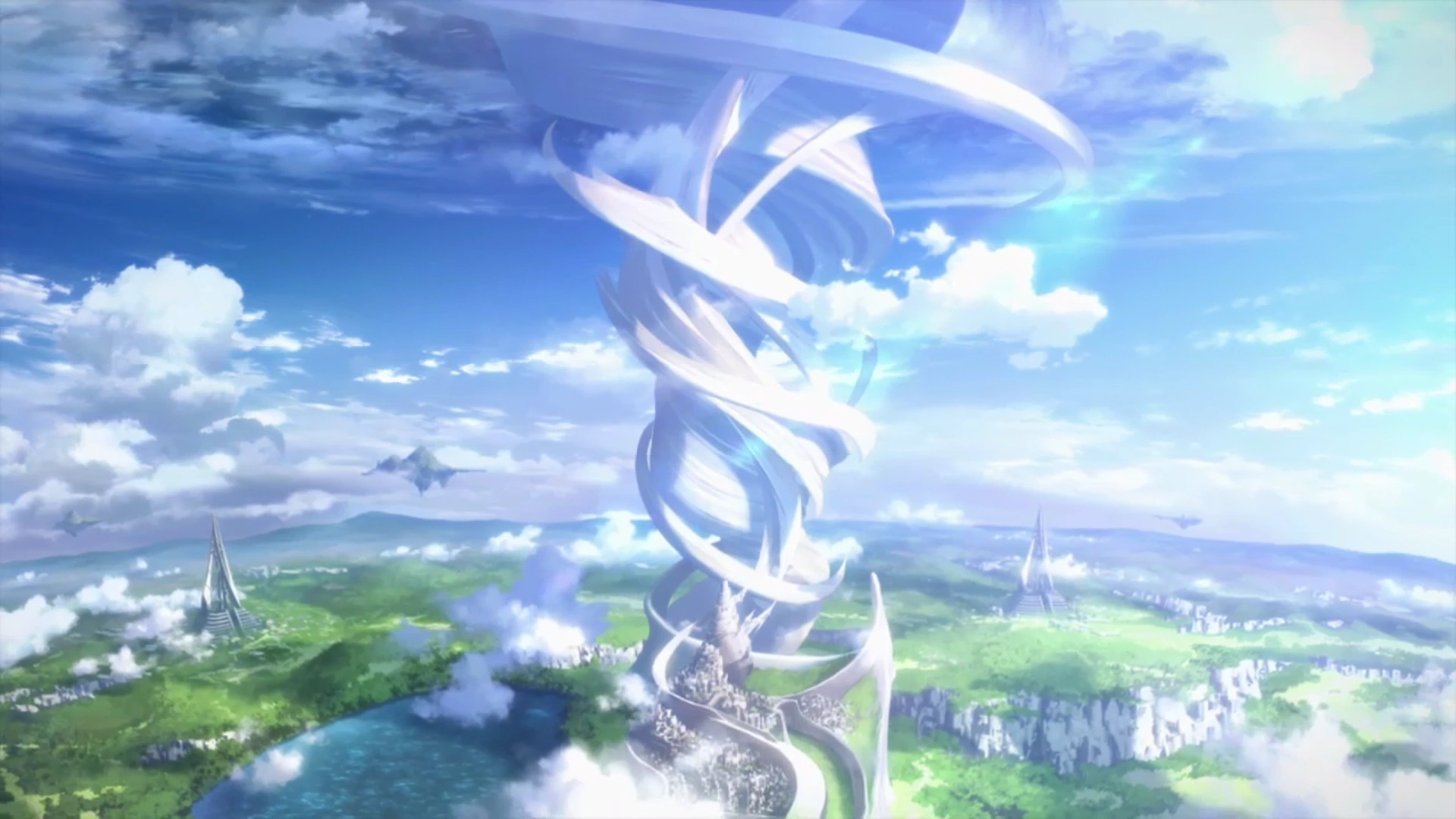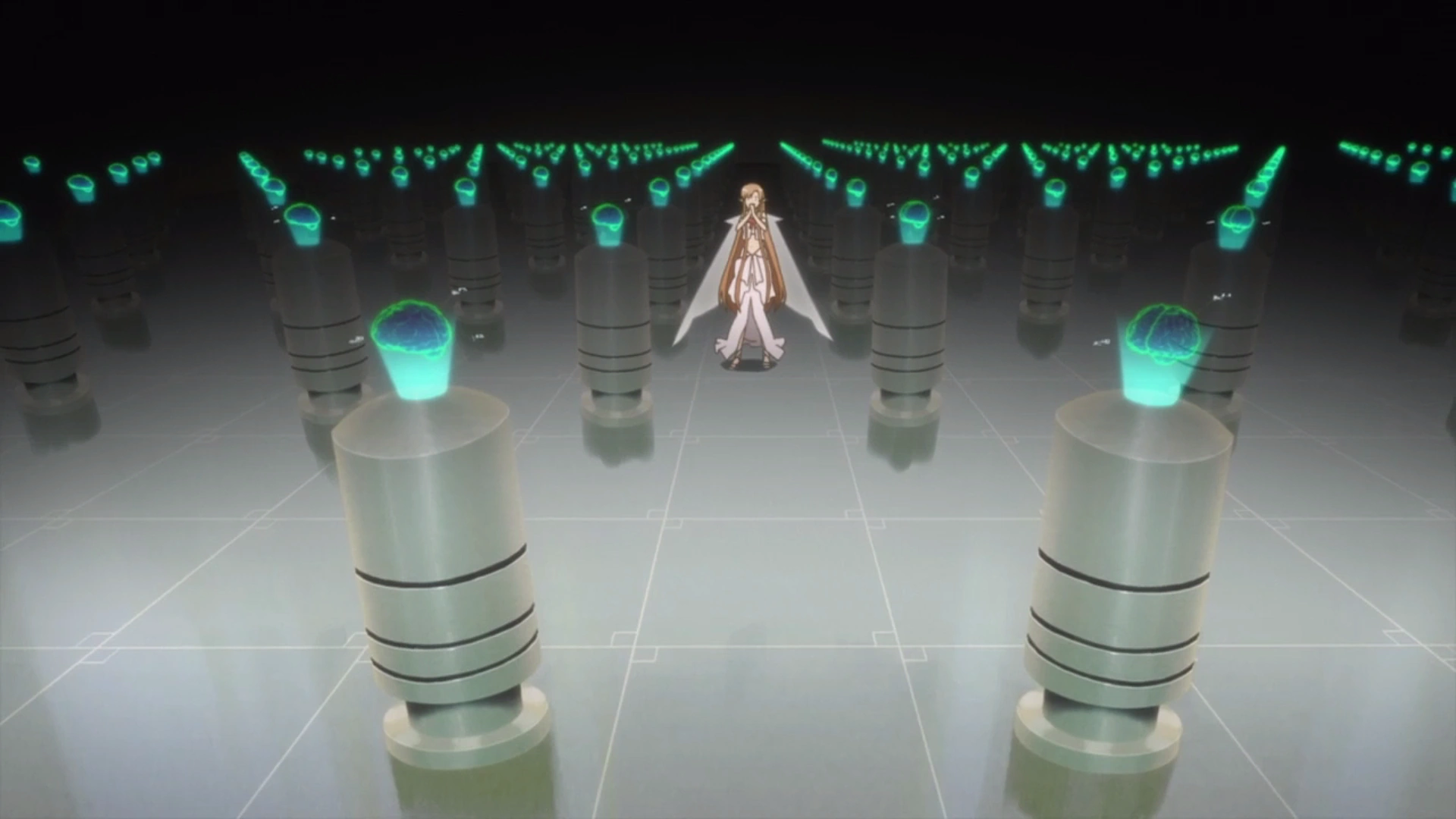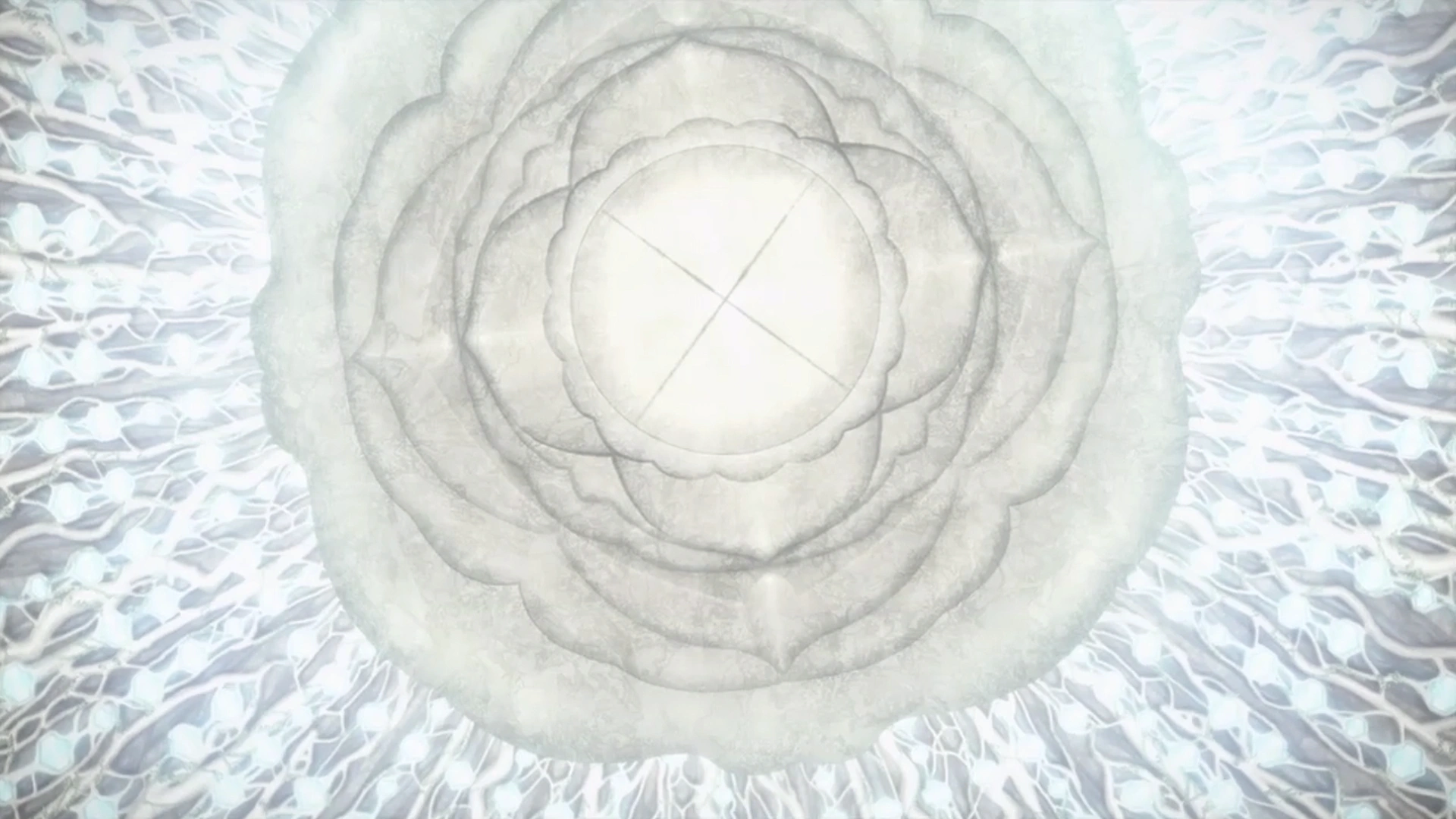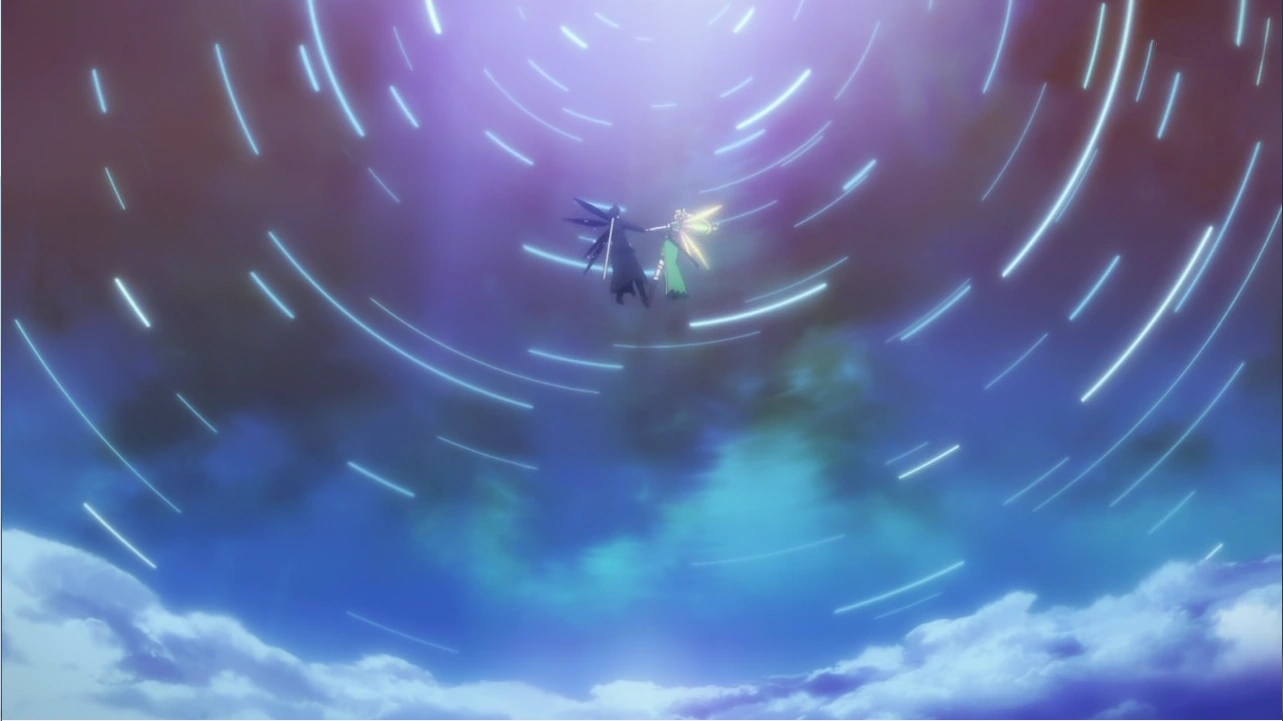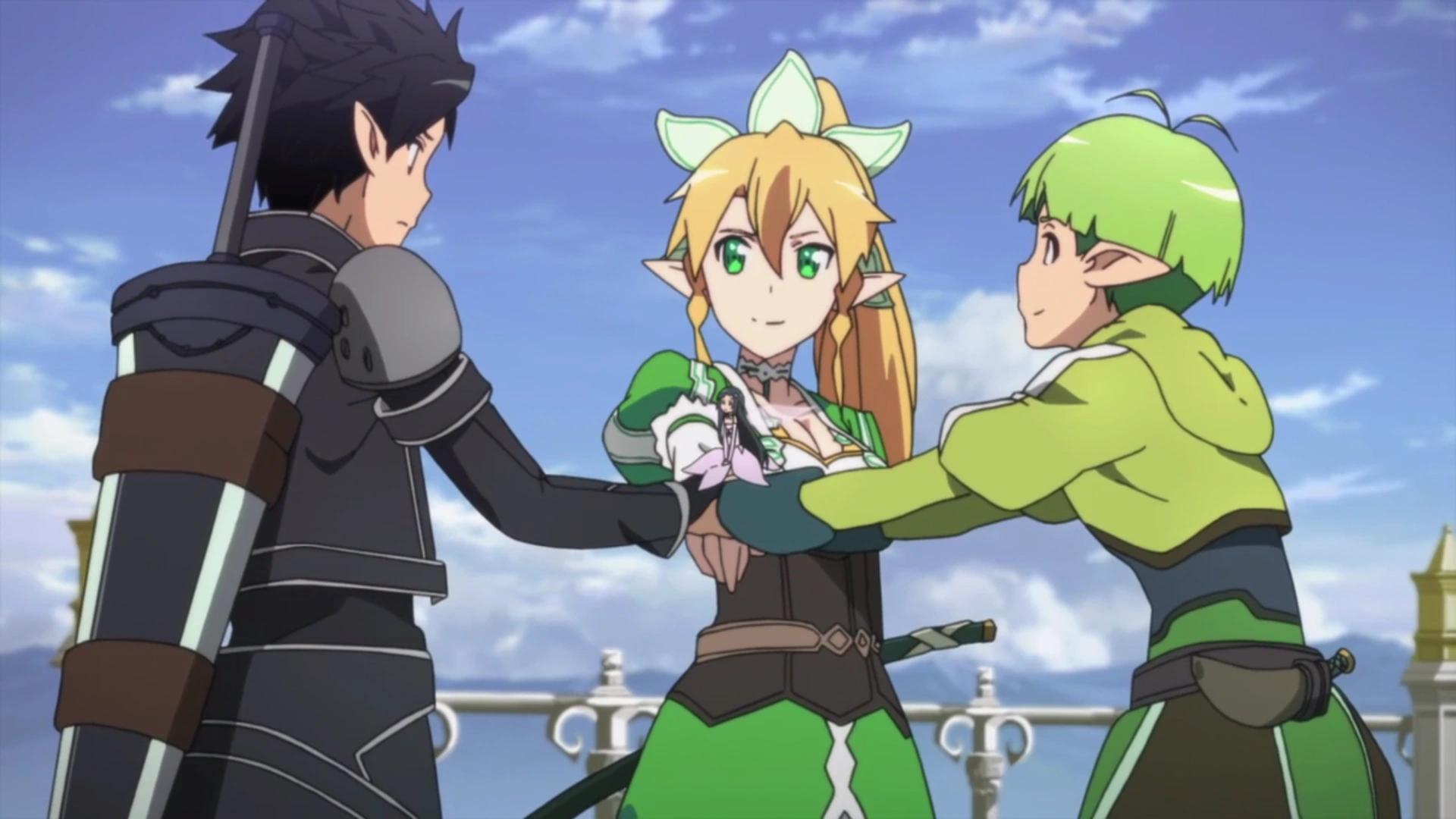Chances are that if you were linked here from another blogger pal, then you might be new. To those first-timers, “Hi, I’m Takuto, welcome to my anime cafe!” For the OWLS blog tour’s tenth monthly topic of 2019, “Fantasy,” I decided to head down a less conventional route for portraying this genre with none other than the (in)famous Sword Art Online. But fear not, for in my most humblest opinion, the Alicization story is not only the franchise’s most competent arc, but most fantasy-heavy one as well.
In the month of October, we will be exploring the world of fantasy in pop culture. The genre of fantasy focuses on telling stories about our external and internal environments. There are many ways we can interpret the word fantasy. For example, we can talk about how a fantastical place could glorify what reality should be, or the dangers of ideal expectations. Fantasy could also be seen as taking a “wild journey” or a “hallucination,” and how that can affect our psyche and well-being. Additionally, fantasy can focus on our personal dreams and expectations, and how those expectations do not align with our reality. Overall, our posts will reflect on how we view the fantasy genre and what we can learn about these pop culture mediums.
Since I’ve got a review of the series coming in a couple days, it’ll be nice to focus exclusively on the cool story elements at play here. SPOILERS will be present. Thanks Lyn and Aria for the prompt!

A brief discussion of the 24-episode fall 2018 anime “Sword Art Online: Alicization” as well as the original novel series, animated by A-1 Pictures, directed by Manabu Ono, and based on the light novel by Reki Kawahara. MAJOR SPOILERS WILL BE PRESENT.
How SAO Blends Magic & Science Fiction
Reki Kawahara’s Sword Art Online has amassed into a franchise that sets its stories in a variety of fantasy worlds, but with a caveat: They are gaming worlds, virtual lands created by programming, and code is the law of the land. My favorite aspect of each season is watching how they seamlessly blends the two genres I love most—fantasy and sci-fi—with one another to create some of the coolest adventure stories out there. SAO is cool, yeah, I said it.

Every magical attack, legendary item, or floor boss is portrayed through a fantasy lens, but can be broken down scientifically by sword skills and hit-points, system stats, and in-game features. SAO, GGO, ALO, and the latest VR world “Underworld” all operate on systems that actively try to rationalize even their most fantastical of elements. Often, yet most especially with this third season, the series isn’t afraid to dive into weapon lore and in-game backstory whenever permissible to explain certain mechanics and unique properties. As such, SAO is a universe structured around duality: the relationship between code (the outside world) and lore (the inside world)
In this community, however, it is rare for people to call parts—let alone entire story arcs—of SAO “good” or even “great” like I do, which kinda sucks as a fan. But the coming of Alicization changed the game, truly, and imparted with us a story of epic proportions unlike anything the series has tackled before. And with the grand War of Underworld on the horizon, there’s no better time than now to sit down and take a look at the inner mechanisms of this latest world our hero finds himself trapped in.

System Call: Underworld’s Unique Features
As with previous seasons, Kirito is forced into another virtual world due to circumstances far out of his control. What immediately draws his eyes to this virtual reality, unlike others have done before, however, is that “Underworld” looks and feels very real. And it should—it’s based on a network of real human memories, after all. By highlighting the neural pathways of the brain—the “Fluctlight”—and flooding them with visual imagery that stimulates one’s haptic, echoic, and visual senses, a person hooked up to the “Soul Translator” can essentially experience life in an entirely different world, detailed down to the tiniest speck of dirt.
While the mind is in some far off world full of swords and dragons, the physical body remains intact on the outside. You could almost view Kirito’s wild journey through the fantastical unknown as one big hallucination, as every memory made in the game world is erased upon awakening (due to a contractual agreement made between the Rath Scientists and the subject). This allows Kirito’s mind to continue operating and maintain the neural connections that would otherwise be lost due to his fatal encounter at the third season’s beginning.
And so here we are, in this world that looks just like ours on the surface, but operates under an entirely different set of encoded gimmicks and laws. Instead of chemical properties and physics, everything in Underworld has life and experience points. Rocks, trees, food, weapons, and of course people are all bound to a numerical HP. Can’t seem to lift a heavy blade or open a particular door? Perhaps it’s not your own strength at fault, but the fact that such “objects” may be assigned a higher priority number than your own level can currently interact with. And you don’t “make” fires—you “Generate Thermal Elements.” Such cool coding lingo.

The system gets even more interesting when it comes to the Integrity Knights’ Divine Object-class weapons, one-of-a-kind arms they wield to protect the human realm. Each with their own unique origin, such legendary swords or bows can unleash unimaginable powers beyond their prescribed damage set, especially if the weapon’s memory is triggered via the “Enhance Armament” system command, followed by “Release Recollection.”
For instance, Kirito’s Night Sky Sword, made from the highest branch of the once-infellable Gigas Cedar, can summon all of the darkness amassed through years of gazing at the stars in one incredible blast when its memory is released. Eugeo’s Blue Rose Sword, born from a lonely rose which blossomed in the snow and ice of the End Mountains, freezes all in its user’s path, encasing foes in icy vines and frost.

For the Integrity Knights, the lore embedded within their Divine Objects runs even deeper due to their creator’s self-assigned calling as Ruler of Underworld. The titular Alice Synthesis Thirty’s golden-petaled Osmanthus Blade was originally the first tree programmed in Underworld, and thus the oldest creation in the land. Fanatio Synthesis Two’s Heaven Piercing Sword was a physics experiment of Administrator’s in which the concentrated the light of a thousand mirrors was forged into a single blade in an attempt to mimmick the great Solus itself.
And get this: the great Bercouli Synthesis One’s Time Piercing Sword was crafted from the needle on the first village’s clock tower—Underworld’s own system clock. I just love the way Kawahara marries gaming mechanics and programming with story lore to form not just creative weapon origin stories, but an entire world full of intrigue and wonder to be fascinated with.

Cracking open the Central Cathedral
When a story presents you with a tower, you climb it. Whether you’re adventurous or not, that’s just what you do. Kirito seeks out the towering Central Cathedral at the center of the human realm in hopes that somewhere waiting for him on the very top lies a console in which he can log himself out through. While he’s not technically wrong, the costs of getting to the 100th floor far outweigh the prize he seeks.
The very act of ascending Central Cathedral floor by floor feeds us with hope that whatever lies at the top will scratch that itch we’ve had since Kirito first woke up in Underworld. Little did any of us realize how truly unprepared we were for the rich irony awaiting our poor characters, as well as the truth behind the horrific secrets holding the fabric of their world together.
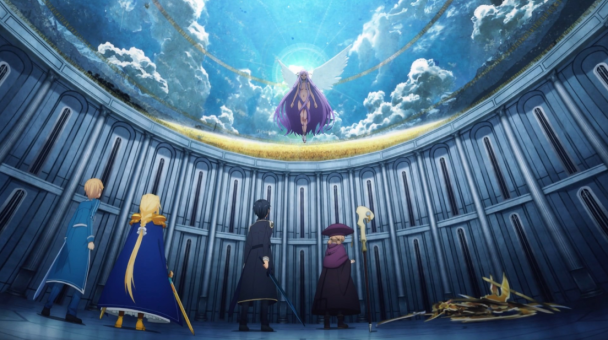
As the Pontifex of the church, Administrator, imparts her devious and wicked plots to Kirito and his friend Eugeo, we finally come to understand that some truths are in fact better not knowing. The holy order that’s been maintaining peace in the realm, the legend of the three goddesses who blessed the land, the very truth behind the coming cataclysmic invasion by the forces of the Dark Territory—
Of course, it’s all fake. Yup. Fantasy often leaves us spellbound, instilling within us a feeling that something holds deeper meaning than it really does. Perhaps that’s because we want fantasies to entertain us, to dress up the real world, even if the characters may be desperately trying to tear it all down. Like Administrator’s Integrity Knights, which have been brutally brainwashed into fighting on the behalf of some made-up higher power than themselves, we want to believe there is deeper meaning to what we do, and that we’re not just vehicles for someone else’s success or failure.
To trust in that illusion is to fall for deception, and that’s exactly what Administrator did. She deceived people. She built up several lifetimes worth of fraud, lies, and corruption, which are manifested by the imposing, all-seeing tower of Central Cathedral itself. As Kirito remarks toward Administrator, toward Quinella: she’s no god or ruler, but a thief. Quinella preached unconditional love to her followers, but all she really desired was absolute control. So she stole what she wanted from the humans of Underworld, and fabricated layers of mythos to protect her frail ego from the mere thought of losing her power, her authority, and her control over others.

Imagination Holds the Power to Change Everything
Central Cathedral and the Integrity Knights—“born” to fight for the good of the human realm yet unknowingly bow to Administrator’s whim—represent just how a land of honor, bravery, and magic can glorify these noble concepts: People should be born with the freedom to love and protect as they wish to, not as someone else pleases. Kirito and Eugeo’s quest to right the wrongs of this land’s all-powerful Ruler present the dangers of ideal expectations in the form Quinella’s knights that were led astray by her lust. But most of all, we experience firsthand how human morals can be easily twisted when the right bait is dangled in front of our faces.
The power of using imagination to change the world—or in this case create one—is the philosophy that lies at the core of the fantasy genre. If we can dream it, it shall be, and SAO is no exception to this principle. Fantasies can conjure forth one’s greatest mystical musings about how the world can be, and Quinella took this power in her own hands to create a reality where the world bows to her wishes, not the other way around. When Kirito forces his way to her chambers on the 100th floor, her expectations of the fantasy world she created are called into question.
As a VRMMORPG fanatic, I guess you could say Kirito’s ideas of a truly enjoyable fantasy world overpowered even the Ruler’s imagination of such a world, and thus he manages to slay Administrator in combat, single-handed. By then, it was not a battle of strength, but a clash of two individual wills—and an exchange for the truth that resulted in the shattering of over 300 years worth of painstakingly crafted illusions, and the destruction of a young greedy girl’s entire fantasy.

The only proof of my existence is the control I exert. That desire is the one thing that motives me and gives me life! These legs of mine are meant only to trample over others. They are not for bending at the knees! — Administrator
Afterword
Lots of foreshadowing there at the end, I know! It’s not THE Quinella post I wanted to write, but it’ll do for now. This post probably made no sense whatsoever to non-SAO fans, and perhaps even to people who watched and even enjoyed Alicization‘s first half. I often ramble in these posts, but man, someone really should’ve cut me off with this one! A full series review of Alicization is in the works, so I’ll save any kind of rating for then. In the meantime, if you, too, liked the first half of this epic third season, I encourage you to share your favorite aspects about the series in the comments!
This concludes my October 29th entry in the OWLS “Fantasy” blog tour. Scott (Mechanical Anime Reviews) went right before me with a much more pleasant post over the light-hearted Flying Witch that you can read right here! Now, look out for Naja (Blerdy Otome) with an excellent post about the portrayal of romance in her favorite otome games tomorrow, October 30th! Thank you so much for reading, and until next time, this has been
– Takuto, your host



